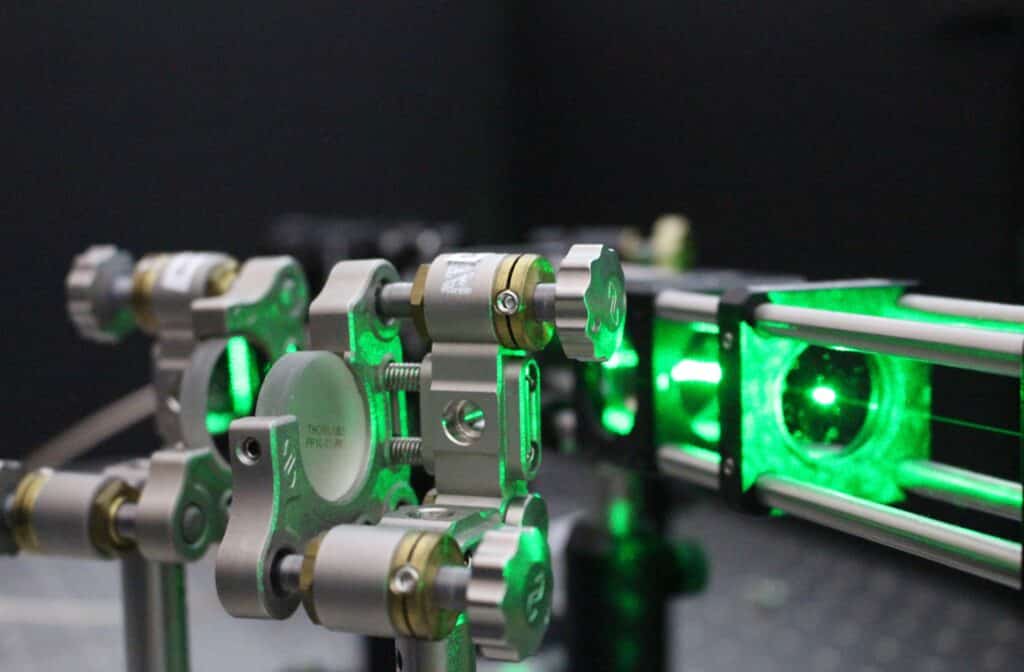In a potentially landmark collaboration, scientists from several prestigious universities are on a mission to answer one of the universe’s most profound mysteries: Is gravity quantum in nature? This exciting experiment, spearheaded by experts from the Universities of Warwick, UCL, Yale, Northwestern, and Groningen, will explore whether gravity operates at the quantum level like other fundamental forces such as electromagnetism.
General Relativity vs. Quantum Mechanics: A Century-Old Puzzle
General relativity, a theory developed by Einstein, explains gravity’s workings on a massive scale, such as planets and stars. Published in 1915, Einstein describes gravity as a consequence of the curvature of spacetime caused by mass and energy. Rather than viewing gravity as a force, general relativity explains gravity as the warping of spacetime so that objects follow curved paths.
For example, imagine space as a stretchy fabric. When a heavy object like a planet is put on the fabric, it creates a dent. This dent curves the space around it, like bending a trampoline. When other objects like moons try to move through that curved space, they get pulled towards the planet – this is what we call gravity. Einstein figured out that heavy things curve space, and that’s why they attract other things.
On the other hand, quantum mechanics delves into the bizarre world of atoms and molecules. It is based on the concept that energy, momentum, angular momentum, and other physical properties can be studied as quantized values that have discrete jumps between levels rather than continuous variations.
Really tiny pieces of matter, like atoms and particles, act very strangely compared to things we see every day. Rather than having smooth and predictable properties like position and speed, matter can actually be in a few different states at the same time. For example, an electron could be in multiple places in an atom at once. These particles jump between definite states rather than having intermediate values. Understanding these quantum jumps is what quantum mechanics seeks to explain.
These two theories have stood as the pillars of modern physics, yet they operate seemingly in parallel universes with no connection.
The pressing question, as put forth by these scientists, is how to unify these two theories. This union is essential to fully understand the universe’s fundamental nature, particularly whether gravity functions at the quantum level. Despite numerous theoretical propositions, concrete experimental evidence has remained elusive—until now.
A Quantum Leap with Microdiamonds
Named “MAST-QG” (Macroscopic superpositions towards witnessing the quantum nature of gravity), this project marks a significant step in our quest to understand the universe’s deepest secrets.
The experiment’s novelty lies in its approach: levitating two microdiamonds in a vacuum and placing each in a quantum superposition. This means each diamond would exist in two places simultaneously—a core aspect of quantum mechanics. “Atoms and molecules have been successfully put into such a superposition state, but we want to do this with much larger objects,” says the study’s principal investigator Gavin Morley, a professor with the University of Warwick’s Department of Physics, in a statement.
Drawing a parallel with the famous Schrödinger’s cat thought experiment, Morley adds: “It would be really weird if everyday objects could be in a quantum superposition of being in two places at once.”
The goal is to observe whether these superposed diamonds can interact gravitationally, which would be a clear indication of gravity’s quantum nature.
A crucial aspect of this experiment is the concept of quantum entanglement, where two objects are interconnected beyond what’s possible in the everyday world. If gravity is indeed quantum, it could entangle the two diamonds. “If gravity is quantum, then it would be able to entangle the two diamonds,” Morley notes, explaining the profound implications of such a discovery.
However, the road ahead is not without obstacles.
“We need to eliminate all interactions between the nanoparticles other than gravity, which is incredibly challenging since gravity is so weak,” says Dr. David Moore of Yale University.
The experiment, though conducted on Earth, could shed light on phenomena occurring at high energies and in extreme conditions, such as near black holes or at the Big Bang. The implications are monumental. “It is hard to overstate how significant it would be for physicists to have experiments that could probe the correct way to combine quantum mechanics and general relativity,” says co-author Professor Sougato Bose from University College London.
Researchers believe that this experiment could test other aspects of fundamental physics, like deviations from Newtonian gravity at short distances.
As Andrew Geraci, Associate Professor of Physics at Northwestern University, puts it, “This is a challenging experiment, and this project is a pathfinder to address some of the key technical challenges to make these tests of quantum aspects of gravity a reality.”












